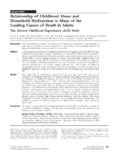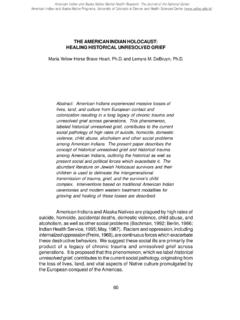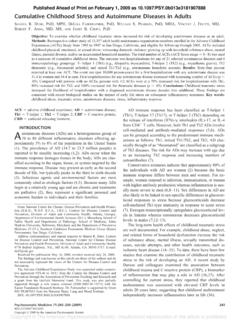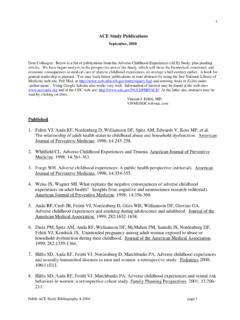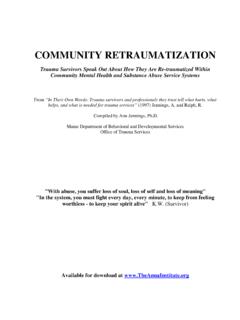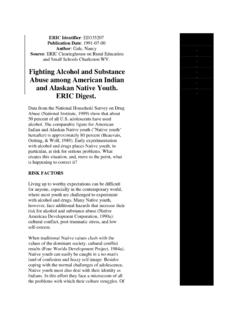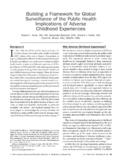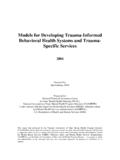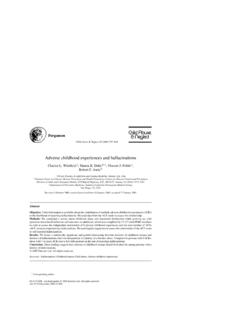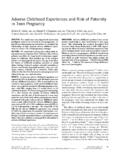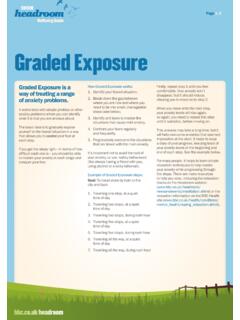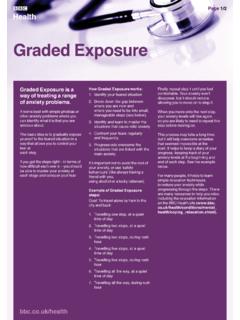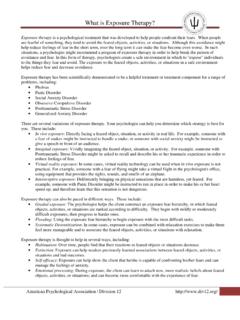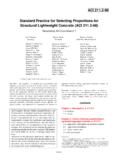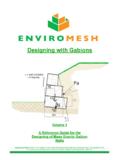Transcription of Exposure to Abuse, Neglect, and Household 1
1 Exposure to abuse , neglect , and Household 1 Running Head: Exposure TO abuse , neglect , AND Household DYSFUNCTION Exposure to abuse , neglect , and Household Dysfunction Among Adults Who Witnessed Intimate Partner Violence as Children: Implications for Integrated Health and Social Services Shanta R. Dube Robert F. Anda Centers for Disease Control and Prevention Vincent J. Felitti Department of Preventive Medicine, Southern California Permanente Medical Group Valerie J. Edwards David F. Williamson Centers for Disease Control and Prevention Corresponding author: Mrs. Shanta R. Dube, MPH Centers for Disease Control and Prevention National Center for Chronic Disease Prevention and Health Promotion Division of Adult and Community Health 4770 Buford Highway, , MS K-47 Atlanta, Georgia 30341-3717 Phone: 770-488-8122 Fax: 770-488-8151 Email: Keywords: Intimate partner violence, Childhood abuse , Childhood neglect , Substance abuse , Depression.
2 Exposure to abuse , neglect , and Household 2 Abstract Intimate partner violence (IPV) damages a woman s physical and mental well-being, and indicates that her children are likely to experience abuse , neglect and other traumatic experiences. Adult HMO members completed a questionnaire about adverse childhood experiences (ACEs) including childhood abuse , neglect , and Household dysfunction. We used their responses to retrospectively assess the relationship between witnessing intimate partner violence and experiencing any of the 9 ACEs and multiple ACEs (ACE score). Compared to persons who grew up with no domestic violence, the adjusted odds ratio for any individual ACE was approximately 2 to 6 times higher if IPV occurred (p < ).
3 There was a powerful graded increase in the prevalence of every category of ACE as the frequency of witnessing IPV increased. In addition, the total number of ACEs was increased dramatically for persons who had witnessed IPV during childhood. There was a positive graded risk for self-reported alcoholism, illicit drug use, IV drug use and depressed affect as the frequency of witnessing IPV increased. Identification of victims of IPV must include screening of their children for abuse , neglect and other types of adverse exposures, as well as recognition that substance abuse and depressed affect are likely consequences of witnessing IPV. Finally, this data strongly suggest that future studies, which focus on the effect of witnessing IPV on long-term health outcomes, may need to take into consideration the co-occurrence of multiple ACEs, which can also affect these outcomes.
4 Exposure to abuse , neglect , and Household 3 Exposure to abuse , neglect and Household Dysfunction Among Adults Who Witnessed Domestic Violence as Children Widespread recognition that women are frequently victims of intimate partner violence (IPV) emerged during the 1980 s. Since then, a growing body of literature has described the risk factors for and the sequelae of women s Exposure to intimate partner violence ( Dept of Justice, 2000). In 1992, the American Medical Association (AMA) issued guidelines that recommend screening every woman for Exposure to domestic violence at every portal of entry to the medical care system (American Medical Association, 1992; Council on Scientific Affairs, 1992).
5 However, reports suggest that these guidelines and protocols are infrequently followed, or that some cases of child abuse or IPV may be inadvertently missed (Bowen, 2000; Culross, 1999; Sugg & Inui, 1992). Most recently, results from the National Violence Against Women Survey conducted from 1995-1996 found that lifetime prevalence of women reporting physical assault by a current or former intimate partner was 22% and that 41% of those physically assaulted sustained an injury from the most recent assault ( Dept of Justice, 2000). Despite the issuance of similar AMA guidelines that promote the screening of children for abuse and neglect (Council on Scientific Affairs, 1985), the concomitant problems of violence against women and abuse and/or neglect of her children appear to be frequently treated as separate issues.
6 One reason for this is the different health care practice for adults and children. Second, health care professionals involved in the care of battered women don t always question the victims about the well-being of their children (Bowen, 2000; Culross, 1999; Sugg & Inui, 1992). This is complicated by the fact that battered women are not always willing to discuss the involvement of their children in the assault (Bowen, 2000; Culross, 1999; Sugg & Inui, 1992). In fact, a number of recent studies demonstrate that the children of battered women are often victims of abuse and neglect themselves and that these children are present more often than not during violent altercations between parents (Bowen, 2000; Fantuzzo, Boruch, Beriama, Atkins, & Marcus, 1997; Jaffe, Wolfe, & Wilson, 1990).
7 Finally, many health care practitioners who treat victims of IPV may not recognize that the trauma of growing up with a battered mother has damaging effects on children. For instance, it has been suggested that substance abuse and Exposure to abuse , neglect , and Household 4 mental health disorders can be the sequelae of abuse and neglect in childhood, or witnessing IPV as a child (Campbell & Lewandowski, 1997; Groves, 1999; Hughes, 1988; Jaffe, Wolfe, Wilson, & Zak,1986; Spaccarelli, Sandler, & Roosa, 1994). The purpose of the current study is to describe the relationship between reports of witnessing IPV and the likelihood of other adverse childhood experiences (ACEs). Specifically, we quantify the strength of the associations between witnessing IPV and being exposed in childhood to abuse , neglect , Household substance abuse , criminality of Household members, mental illness among Household members, and parental discord.
8 We first assess the strength of these interrelationships in order to substantiate the need for systematic care of adults and children as it pertains to the prevention and treatment of violence against women and ACEs. We then examine the relationship between frequency of witnessing IPV as a child and the risk for substance abuse (self-reported alcoholism, illicit drug use, IV drug use) and depressed affect in adulthood. We did this to provide additional information about the long-term influence of witnessing IPV to persons who deal with IPV and for others whose roles deal primarily with other types of ACEs with which IPV frequently co-occurs. Method The Adverse Childhood Experiences (ACE) Study is a collaborative study between the Kaiser Health Plan s Health Appraisal Center in San Diego, California, the Centers for Disease Control and Prevention (CDC, Atlanta), and Emory University.
9 The overall objective is to assess the impact of numerous, interrelated, adverse childhood experiences on a wide variety of health behaviors and outcomes and on health care utilization (Felitti et al., 1998). The ACE Study was approved by the Institutional Review Boards of the Southern California Permanente Medical Group (Kaiser Permanente), Emory University, and the Office of Protection from Research Risks, National Institutes of Health. Study Population The study population was drawn from the Health Appraisal Center (HAC), which was created to provide complete and standardized medical, psychosocial, and preventive health evaluations to adult members of Kaiser Health Plan in San Diego County. In any four-year period, 81% of the adult membership will obtain this Exposure to abuse , neglect , and Household 5 complete health assessment and over 50,000 members are evaluated each year.
10 Thus, the purpose of a visit to the HAC is primarily for the purposes of complete health assessments, rather than symptom or illness-based care. Every person evaluated at the HAC completes a standardized questionnaire, which includes detailed health histories, as well as health related behaviors, a medical review of systems and psychosocial evaluations. All of this standardized information was abstracted for each person and is included in the ACE Study database. ACE Study Design and Questionnaire The baseline data collection was divided into 2 survey waves that used the same methodology described by Felitti et al. Two weeks after the completion of their HAC evaluation, individuals were mailed an ACE Study questionnaire. The ACE questionnaire included detailed information about adverse childhood experiences ( abuse and neglect ), family and Household dysfunction ( domestic violence and substance abuse by parents or other Household members) as well as additional information about health related behaviors from adolescence to adulthood.
